|
Liebig Cards
Mildred Cookson
|
|
Liebig advertising cards started appearing around
1870 and continued being published until 1975, by
then having published more than 11000 different
types. Every subject chosen was nearly always in a
set made up of six or twelve cards. Trades, people,
countries, music, historical battles, and many more
subjects were covered. In many of the sets
windmills appear. |
 |
Most
series were issued in more than one country, and can
therefore be found in several languages.
The
reverse of most cards advertises the Liebig Company
products or even a recipe. The last lithographed
series came out around 1939, but more cards were
edited until the 1970s.
|
|
The
Liebig Company produced ‘Meat Extract’. The famous
German chemist Justus von Liebig was the inventor of
the meat extraction process which allowed the
essential nutrients and flavours of beef to be
concentrated and preserved in the form of paste or
boullion cubes. An English firm, who owned cattle
farms in South America, decided to start the
production of the extract in 1850 and named it after
its inventor. Soon the product was being sold all
over the world. |

A puzzle card – ‘Where is the Miller?’ – can you
find him?
|
 |
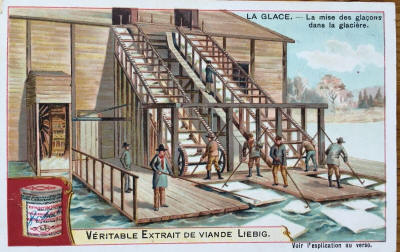
This set shown here, titled ICE, has a waterwheel in
one of the cards (enlarged
above)
powering the lifting of the blocks of ice
Many
famous artists were contacted to design the series
of cards which were first produced using true
lithography, then litho chromo, chromolithography,
and finally offset printing. |
|
Lithography was a printing process that used a flat
stone or metal plate on which the image areas were
worked using a greasy substance so that the ink
would adhere to them, while the non-image areas were
made ink-repellent.
Chromolithography used the flat surface of specially
prepared stones as printing plates.
Chromolithographic images were produced by printing
each colour separately, then super-imposing those
colours to make a finished full-colour print.
|
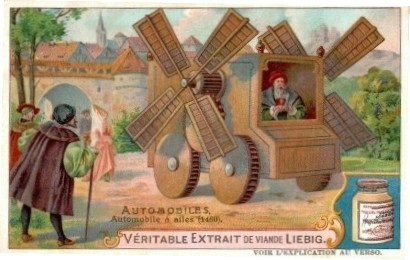 |
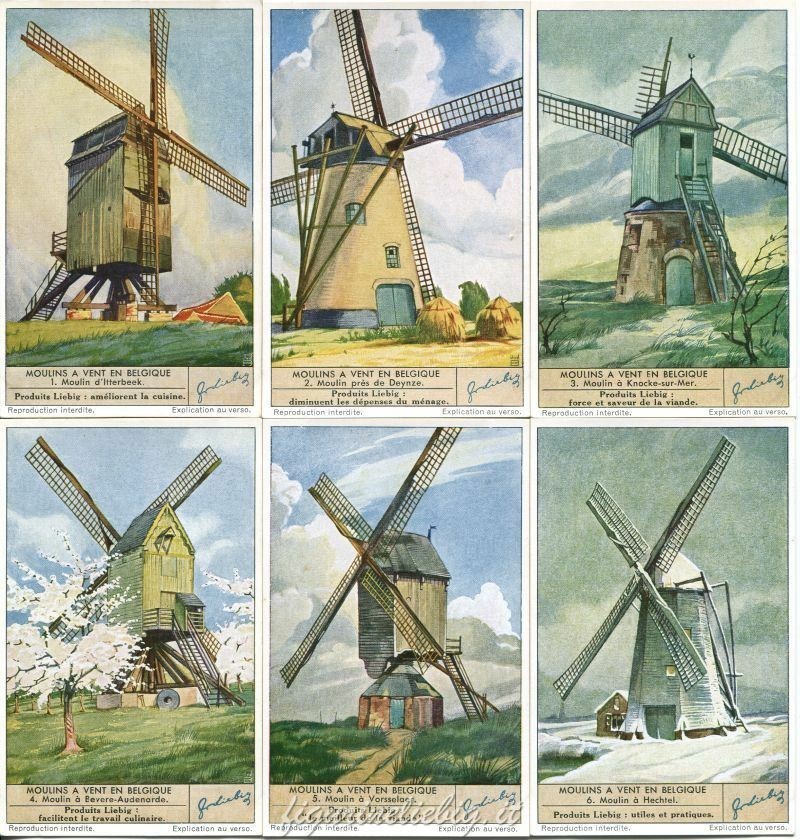
Belgian windmills, clockwise from top left::
Moulin d’Itterbeck,
Moulin près de Deynze,
Moulin à Knocke-sur-Mer
Moulin à Hechtel,
Moulin à Vorsselare,
Moulin à Bevere-Audenarde
|
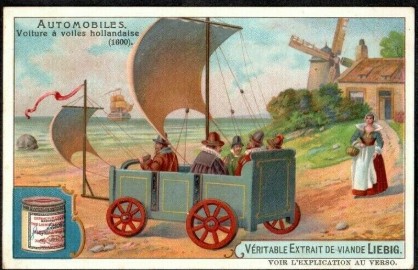 |
The
process was labour-intensive, as each colour
required a separate stone with the image (or portion
of the image) drawn on it. The stones were then
inked individually, and until the invention of
modern presses, the paper – one sheet at a time –
was run across the stones, taking on each pass the
impression of a different colour. |
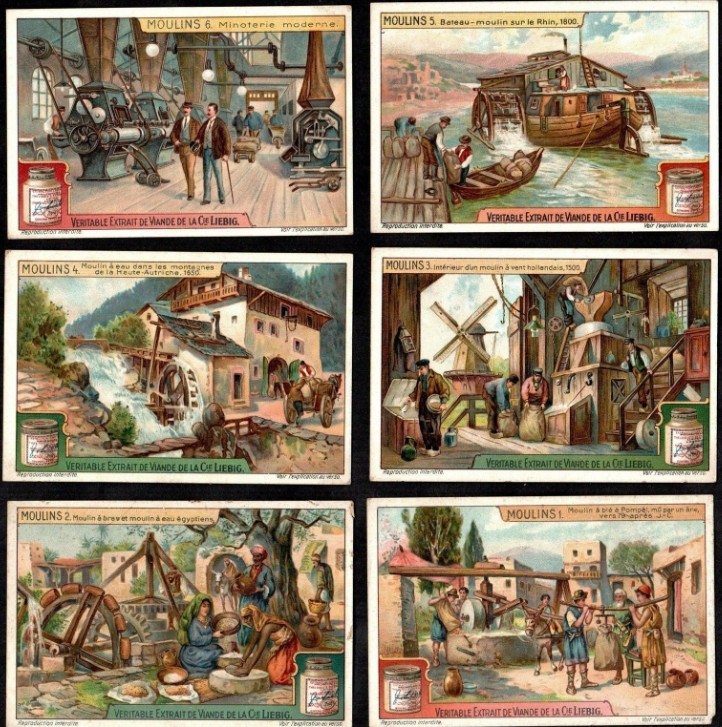
A series showing the history of milling |
6. Modern flour mill
4. Watermill in the mountains of Upper Austria, 1650
2. Egyptian hand mill and water mill |
5. Boat mill on the Rhine, 1800
3. Interior of a Dutch windmill, 1500
1. Donkey-driven mill in Pompeii about 79AD |
|
This article appeared in the Spring 2019 issue of
Mill Memories, the newsletter of the Mills Archive
Trust, and is reprinted with permission of the
author.
Editor:
Justus
von Liebig was a German scientist who made
major contributions to agricultural and
biological
chemistry,
and is considered one of the principal founders of
organic chemistry.
Many of you will recognise his name from the Liebig
condenser which you encountered in chemistry lessons
at school, and which he invented.
|
